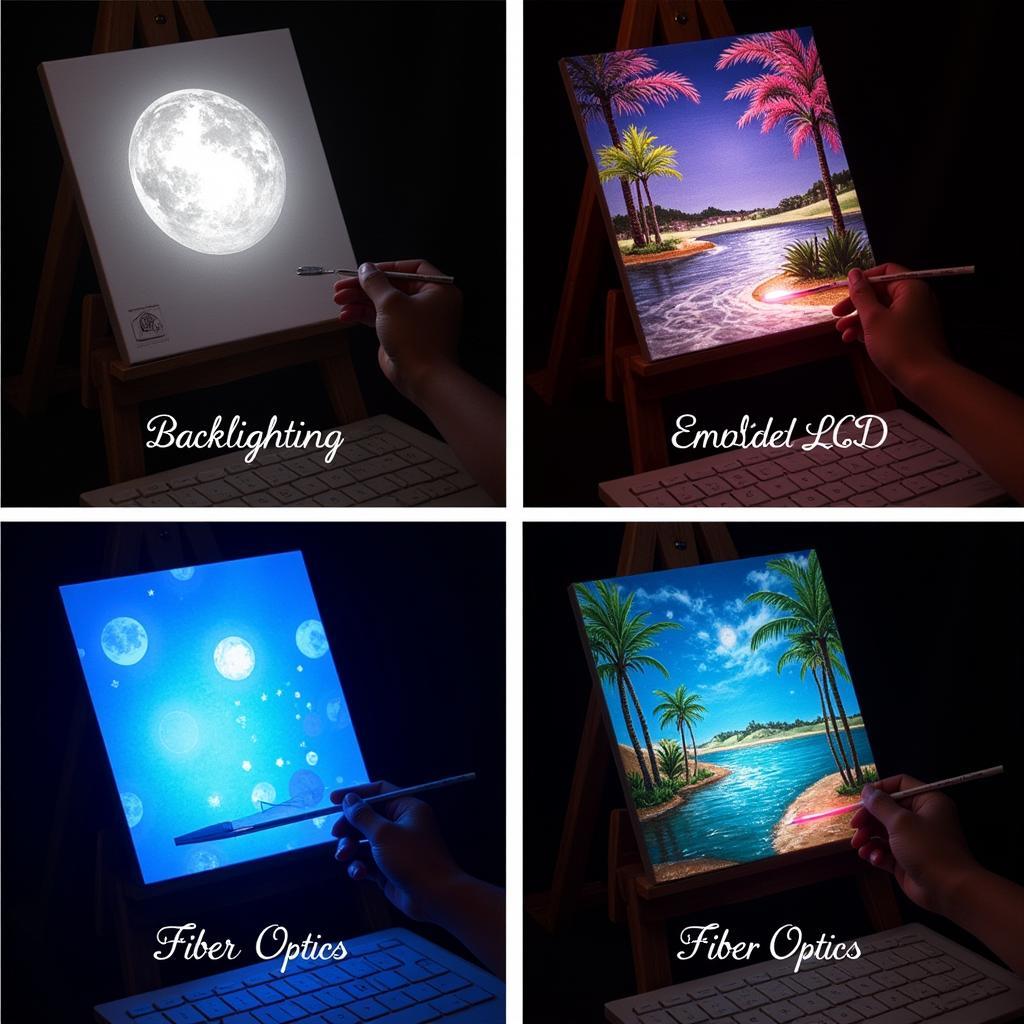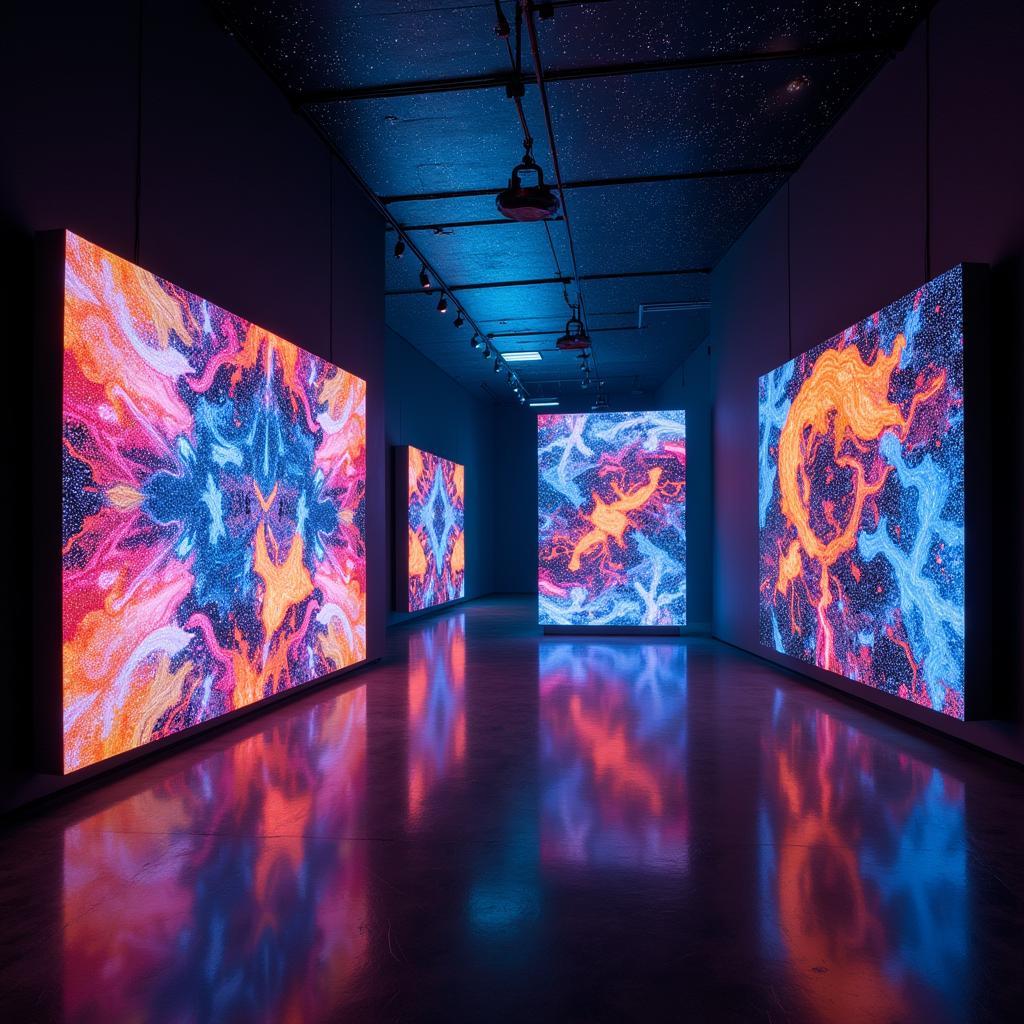Illuminated Canvas Art: A Fusion of Light and Creativity
Illuminated Canvas Art is transforming the way we experience art, bridging the gap between traditional painting and modern technology. By incorporating LED lights, fiber optics, or other light sources, artists are creating dynamic, captivating pieces that transcend the static nature of conventional canvases. These artworks offer a mesmerizing interplay of light and shadow, adding depth, texture, and an ethereal quality that captivates viewers.
As an artist specializing in illuminated canvas art, I’m constantly exploring the endless possibilities this medium offers. From subtle backlighting that enhances the existing colors to vibrant, pulsating displays that shift and change with the environment, illuminated canvas art is a powerful tool for storytelling and emotional expression. It allows artists to push the boundaries of creativity and immerse viewers in a truly unique sensory experience. For instance, a piece depicting a tree landscape art can be brought to life with the subtle glow of fireflies, adding a touch of magic and realism.
Exploring the Spectrum of Illuminated Canvas Art
Illuminated canvas art encompasses a wide range of techniques and styles. Some artists embed LEDs directly into the canvas, creating intricate patterns and designs that illuminate from within. Others use backlighting to cast a soft glow, highlighting specific areas of the artwork and creating a sense of depth. Still others incorporate interactive elements, allowing viewers to control the light and change the appearance of the piece. This versatility makes illuminated canvas art a truly dynamic and engaging medium.
What materials are used to create illuminated canvas art?
The materials used in illuminated canvas art vary depending on the specific technique employed. Common materials include:
- Canvases (traditional or specially treated for light transmission)
- LED lights (strip lights, individual LEDs, or specialized modules)
- Fiber optic cables
- Acrylic paints (transparent, opaque, or fluorescent)
- Diffusers and light-modifying materials
- Power supplies and controllers
Unveiling the Magic: Techniques in Illuminated Canvas Art
Creating illuminated canvas art requires a blend of artistic skill and technical expertise. Artists must not only master traditional painting techniques but also understand the principles of lighting, electronics, and material science. This interdisciplinary approach allows for a truly unique and innovative form of artistic expression. Imagine transforming a simple city scape art into a vibrant, glowing metropolis with strategically placed LEDs.
How can I incorporate light into my canvas art?
There are several ways to incorporate light into canvas art:
- Backlighting: Placing lights behind the canvas to create a soft glow and enhance colors. This technique is particularly effective with translucent canvases or those with strategically placed cutouts.
- Embedded LEDs: Integrating LEDs directly into the canvas, allowing for intricate light patterns and designs. This technique requires careful planning and precise execution.
- Fiber Optics: Using fiber optic cables to transmit light to specific areas of the canvas, creating a more focused and controlled illumination.
 Illuminated Canvas Techniques
Illuminated Canvas Techniques
Illuminated Canvas Art: A Bright Future
Illuminated canvas art is a rapidly evolving field, constantly pushing the boundaries of what’s possible. As technology advances, we can expect to see even more innovative and captivating works of art that blur the lines between the physical and digital worlds. Think of interactive installations that respond to viewers’ movements or canvases that change color and pattern based on environmental factors. The possibilities are truly endless. An art protractor can be helpful in designing and executing intricate light patterns within the artwork.
Imagine a piece of backlit wall art showcasing a serene landscape, transitioning from dawn to dusk with changing light. This dynamic element adds another dimension to the artwork, creating a captivating and immersive experience. The interplay of light and shadow can evoke a wide range of emotions, transforming a static image into a living, breathing work of art.
“Illuminated canvas art allows us to transcend the limitations of traditional painting and create truly immersive experiences,” says renowned light artist, Anya Petrova. “By combining light and color, we can evoke emotions and tell stories in a way that simply isn’t possible with static imagery.”
“The beauty of illuminated canvas art lies in its ability to transform any space,” adds David Chen, a prominent gallery owner specializing in digital art. “It’s not just a painting; it’s a dynamic, interactive piece that captivates and inspires.”
 The Future of Illuminated Canvas Art
The Future of Illuminated Canvas Art
Conclusion
Illuminated canvas art offers a unique and captivating way to experience art. By fusing light and creativity, artists are pushing the boundaries of traditional painting and creating truly immersive experiences. From subtle backlighting to vibrant, interactive displays, illuminated canvas art has the power to transform any space and ignite the imagination. Consider exploring the world of illuminated canvas art and discover the magic it holds.
FAQ
- What is illuminated canvas art?
- How is illuminated canvas art created?
- What are the different types of illuminated canvas art?
- Where can I buy illuminated canvas art?
- How do I care for illuminated canvas art?
- Can I create my own illuminated canvas art?
- What are the benefits of illuminated canvas art?
For further inspiration, explore captivating artworks like awol art in the dark.
Contact us for assistance: Phone: 02462573573, Email: [email protected]. Visit us at Savico Megamall, 7-9 Đ. Nguyễn Văn Linh, Gia Thụy, Long Biên, Hà Nội 10000, Việt Nam. We offer 24/7 customer support.


